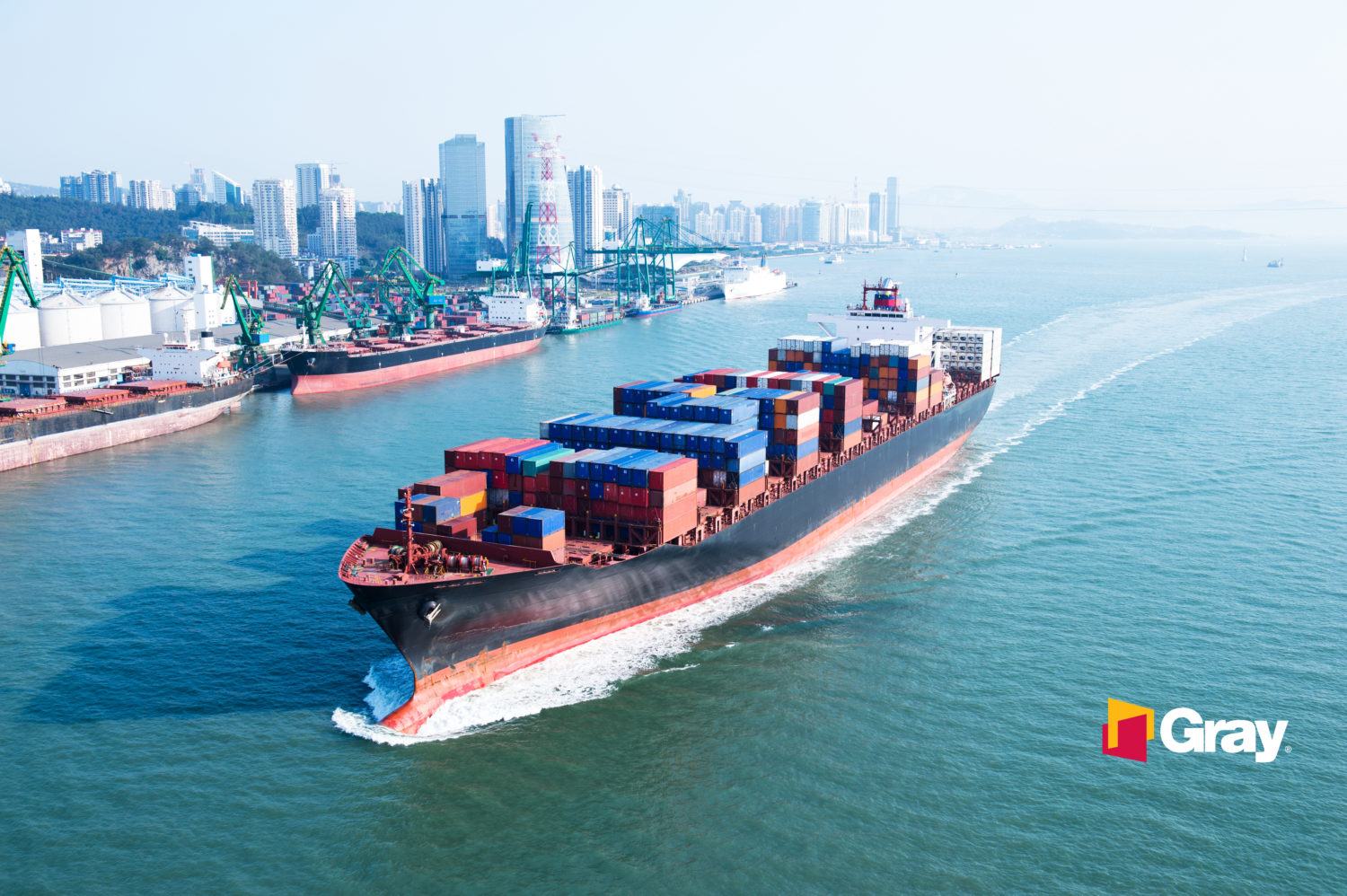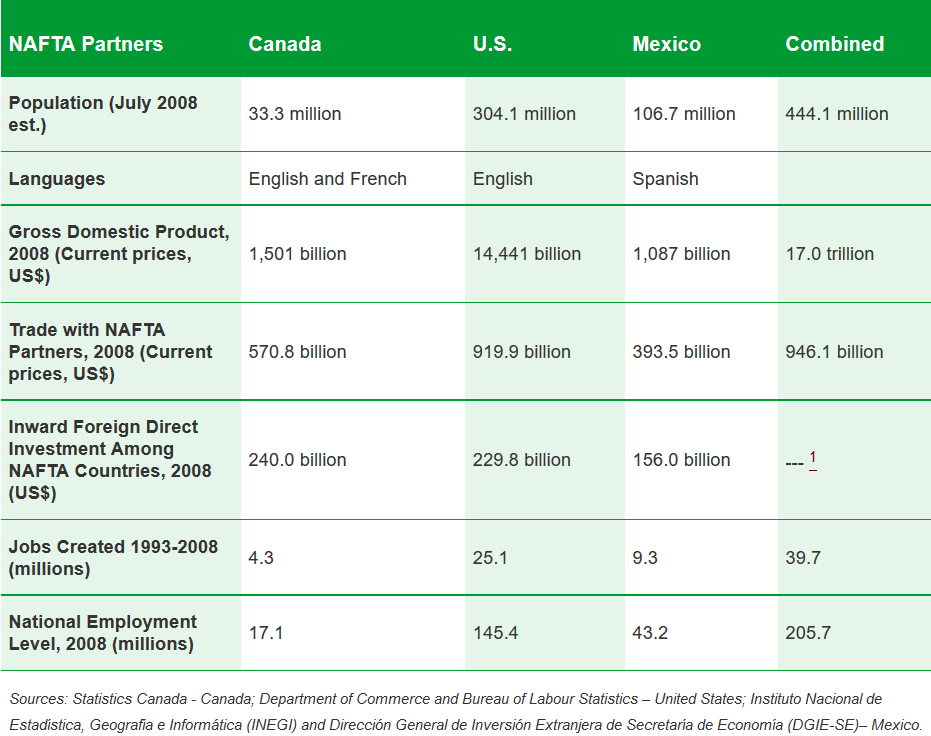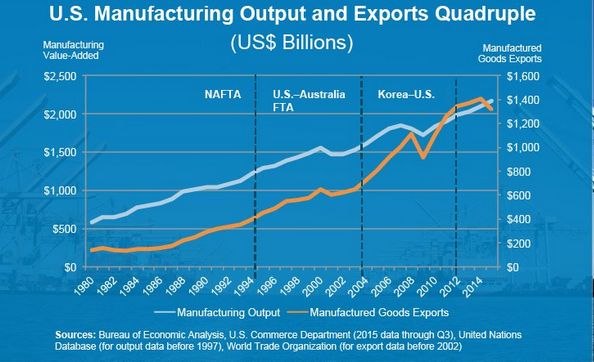Open Trade: Why It Is Important to the U.S. Economy
Due to the nature of what trade is and the various players involved, it’s a debatable topic. However, open or free trade, which is international trade without restrictions such as tariffs or quotas, is vital to address for its ongoing significance to the U.S. economy. Free trade agreements (FTAs) determine the tariffs, or the taxes and stipulations, that the represented countries pose on imports and exports. According to a July 2016 NBC News/Wall Street Journal poll, the majority of Americans support free trade with foreign countries, while 38 percent believe it is bad for America. The difficulty emerges when it comes to defining a free trade policy.

It’s hard to talk about U.S. trade without mentioning the North American Free Trade Agreement, also known as NAFTA. This agreement between the United States, Canada and Mexico went into effect in 1994.

NAFTA created one of the world’s largest free trade zones to ultimately set the stage for stronger economic growth for all the countries involved. Under NAFTA, the North American economy has a combined output of $17.0 trillion. According to the National Association of Manufacturers (NAM), the economies of all three nations have doubled under NAFTA, which includes record level manufacturing rates in each country. In fact, Linda Dempsey, the vice president of international economic affairs at the NAM, has pointed out that, since NAFTA, U.S. manufacturing has increased more than ever before with a quadrupled export rate.

She has also stated U.S. manufacturers added some 800,000 jobs between NAFTA’s inception through 1997.
In an effort to continue to build upon the momentum of NAFTA, President Obama made the Trans-Pacific Partnership (TPP) a big part of his trade agenda goals. The TPP is between Australia, Brunei Darussalam, Canada, Chile, Japan, Malaysia, Mexico, New Zealand, Peru, Singapore, Vietnam and the United States and is designed to:
- Promote economic growth
- Support the creation and retention of jobs
- Enhance innovation, productivity and competitiveness
- Raise living standards
- Reduce poverty in the signatories’ countries
- Promote transparency, good governance, and enhanced labor and environmental protections
Notably, China and India are not included in this agreement. The Whitehouse has said:
“With the TPP, we can rewrite the rules of trade to benefit America’s middle class. Because if we don’t, competitors who don’t share our values, like China, will step in to fill that void.”
President Obama signed TPP, but the United States has yet to implement it due to the lack of Congressional action. The deal has been widely disputed by Republicans and Democrats alike with both Presidential candidates opposing it as well.
The deal was on the docket of issues to be discussed in the current lame-duck session of Congress, but Congressional leaders told reporters the deal would not be brought up during the remaining session this year.
What does this mean for the future of trade?
With TPP presumably dead, it leaves the future of trade in question for the United States. President-elect Trump frequently discussed trade throughout the election cycle, including claims to cut ties with NAFTA or at least renegotiate the terms of the deal as well as impose across-the-board tariffs on goods from China. Still, it would be premature to assume what will happen. The issue that we, as companies that care about the future growth of America, need to focus on is making sure the topic of trade does not lose momentum. In an open letter, we recently called for President-elect Trump to pursue trade policies that ensures the United States to be a competitive player and that promotes both import and export opportunities.
Why is trade important?
In short, trade impacts both consumers and manufacturers.
According to the U.S. Census, in 2015,
- Total U.S. trade with foreign countries was $4.99 trillion
- Totaling $2.23 trillion in exports
- Totaling $2.76 trillion in imports of both goods and services
- The U.S. was the world’s third-largest exporter, after China and the European Union (EU)
- The U.S was the world’s largest importer
And, let’s not forget, American consumers have more options at lower prices due largely to imports. American manufacturers can import raw materials, which may be more abundant in other countries, and other production inputs that can be produced at a lower cost than from domestic means. Furthermore, the manufacturer can export the final product to buyers around the world while maintaining attractive value-added margins. This, in turn, increases the demand for skilled manufacturing workers.
All these factors drive a strong American economy. The office of the United States Trade Representative sums it up by saying:
“Trade keeps our economy open, dynamic, and competitive, and helps ensure that America continues to be the best place in the world to do business.”
What free trade is not
Let’s understand that free trade agreements are not intended to be jobs’ destroyers. The purpose is actually the opposite – to make it easier for businesses to create products and services, which in turn drives demand and more jobs. Free trade is often accused of driving out small businesses that can’t compete with the larger subsidized businesses in developed countries. On the flip side, foreign investors are often motivated to expand local industries and boost domestic businesses in order to take advantage of local resources.
The phrase “trade deficit” is another area that is often received negatively on behalf of trade deals. This deficit occurs when a country spends more annually on imports than it exports. The U.S., of course, has had a consistently large trade deficit for many years. Economists and politicians are split about what this deficit means. Some push a gloom and doom message that the U.S. is accumulating too much debt, and others believe the deficit to be credited to foreign governments not playing fairly in U.S. markets.
In general, economists suggest that persistent trade deficits will be harmful to a nation’s economy by negatively impacting jobs and currency. Interestingly, the U.S. appears to be an exception to the rule, at least up to this point. This current status could be due to the fact that the U.S. is the world’s largest economy and the U.S. dollar is the world’s reserve currency.
Free trade is also frequently associated with intellectual property theft and reduced tax revenue for under-developed countries. While these are real issues, it is also why institutes such as the World Trade Organization (WTO) – the international body that helps negotiate and regulate free trade agreements – exist.
The U.S. and FTAs
The U.S. has become a major player in international trade for many reasons including the strong American economy and the value of its consumers and the U.S. dollar. It has free trade agreements with some twenty countries, with the United States-Israel Free Trade Agreement being its first free trade agreement. This FTA was signed in 1985, and it has been the cornerstone of the relationship between the two nations. It broke down barriers, promoted transparency and established a strong partnership. This is what the U.S. needs to hold as a standard for future free trade endeavors. Let’s join together and encourage the new administration on open trade to allow us, as U.S. companies, to continue building America.
- Category:
- Industry
- Manufacturing
Some opinions expressed in this article may be those of a contributing author and not necessarily Gray.